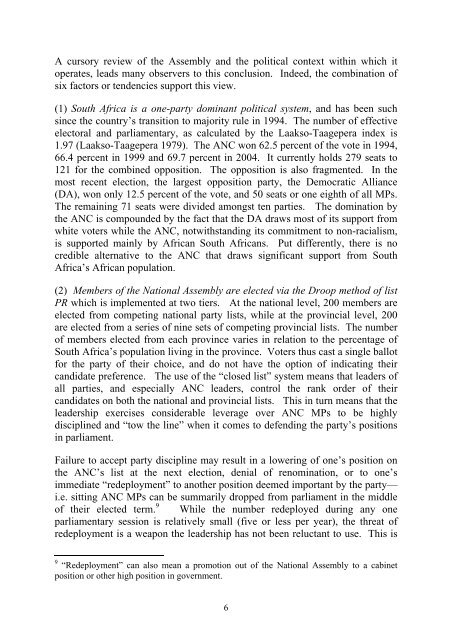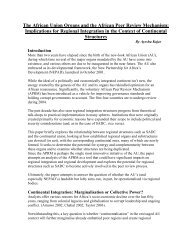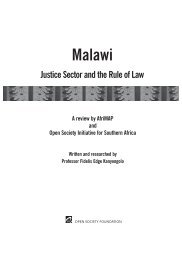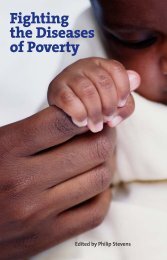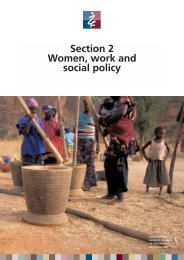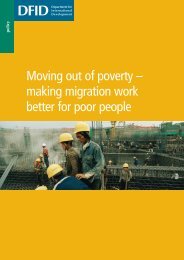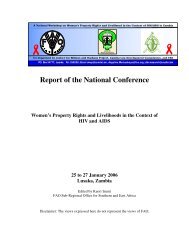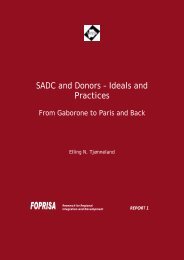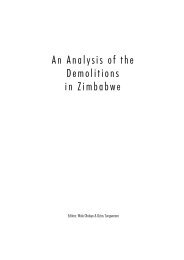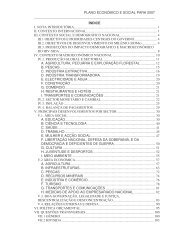400Kb ~ 2 min (33 pages) - SARPN
400Kb ~ 2 min (33 pages) - SARPN
400Kb ~ 2 min (33 pages) - SARPN
You also want an ePaper? Increase the reach of your titles
YUMPU automatically turns print PDFs into web optimized ePapers that Google loves.
A cursory review of the Assembly and the political context within which itoperates, leads many observers to this conclusion. Indeed, the combination ofsix factors or tendencies support this view.(1) South Africa is a one-party do<strong>min</strong>ant political system, and has been suchsince the country’s transition to majority rule in 1994. The number of effectiveelectoral and parliamentary, as calculated by the Laakso-Taagepera index is1.97 (Laakso-Taagepera 1979). The ANC won 62.5 percent of the vote in 1994,66.4 percent in 1999 and 69.7 percent in 2004. It currently holds 279 seats to121 for the combined opposition. The opposition is also fragmented. In themost recent election, the largest opposition party, the Democratic Alliance(DA), won only 12.5 percent of the vote, and 50 seats or one eighth of all MPs.The remaining 71 seats were divided amongst ten parties. The do<strong>min</strong>ation bythe ANC is compounded by the fact that the DA draws most of its support fromwhite voters while the ANC, notwithstanding its commitment to non-racialism,is supported mainly by African South Africans. Put differently, there is nocredible alternative to the ANC that draws significant support from SouthAfrica’s African population.(2) Members of the National Assembly are elected via the Droop method of listPR which is implemented at two tiers. At the national level, 200 members areelected from competing national party lists, while at the provincial level, 200are elected from a series of nine sets of competing provincial lists. The numberof members elected from each province varies in relation to the percentage ofSouth Africa’s population living in the province. Voters thus cast a single ballotfor the party of their choice, and do not have the option of indicating theircandidate preference. The use of the “closed list” system means that leaders ofall parties, and especially ANC leaders, control the rank order of theircandidates on both the national and provincial lists. This in turn means that theleadership exercises considerable leverage over ANC MPs to be highlydisciplined and “tow the line” when it comes to defending the party’s positionsin parliament.Failure to accept party discipline may result in a lowering of one’s position onthe ANC’s list at the next election, denial of reno<strong>min</strong>ation, or to one’simmediate “redeployment” to another position deemed important by the party—i.e. sitting ANC MPs can be summarily dropped from parliament in the middleof their elected term. 9 While the number redeployed during any oneparliamentary session is relatively small (five or less per year), the threat ofredeployment is a weapon the leadership has not been reluctant to use. This is9 “Redeployment” can also mean a promotion out of the National Assembly to a cabinetposition or other high position in government.6


